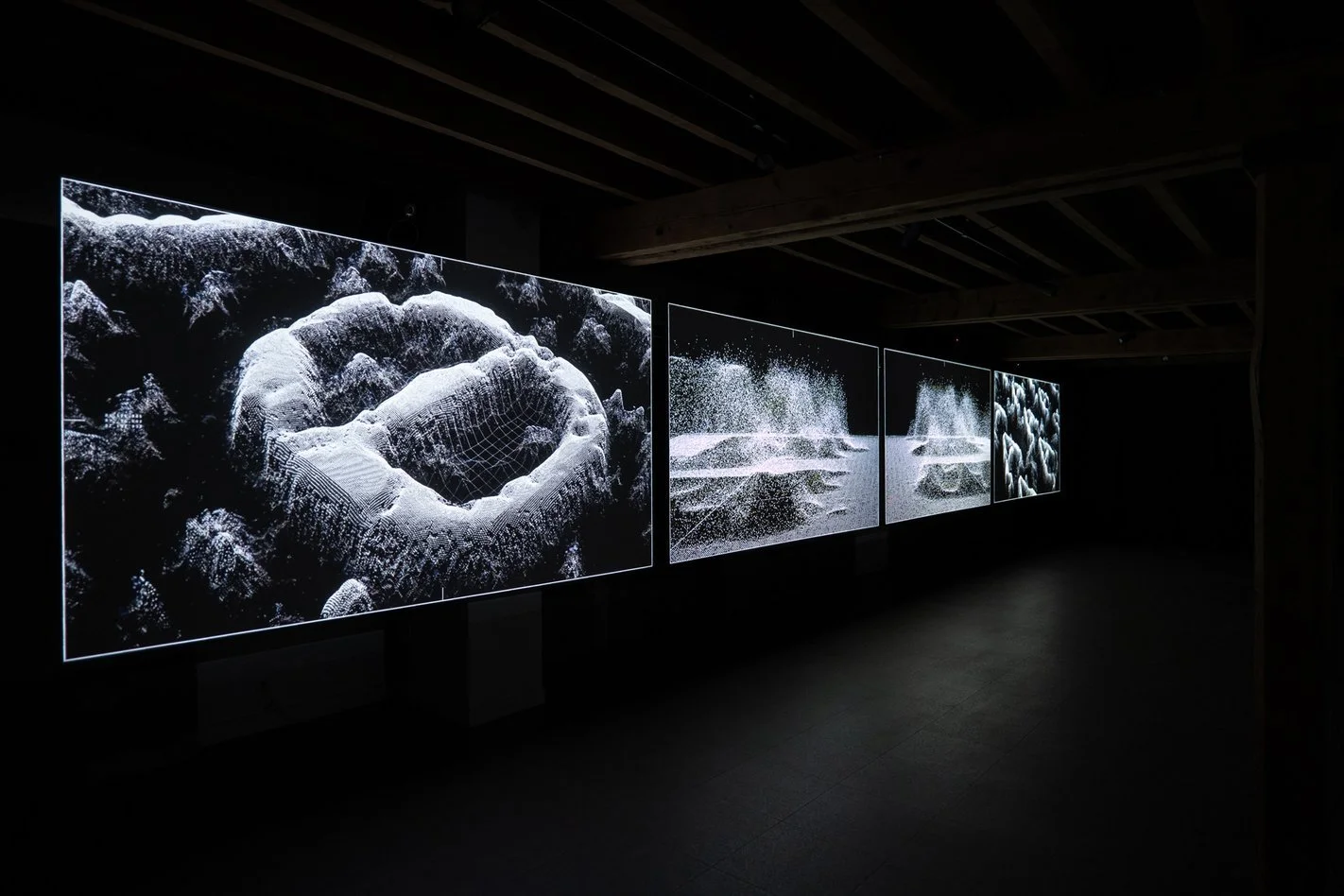Abstract Language Model
Andreas Lutz
For „Abstract Language Model“, an artificial neural network was trained with the entire character sets represented in the Unicode Standard (over 65.000 characters in the basic multilingual plane system). The resulting complex data models contain the translation of all available human sign systems as equally representable, machine-created states and create latent points where the most accurate representation of the characters is achieved. However, between these points interpolation becomes possible, which means that among two previously distinct characters now infinite characters come into existence, which can be seen as the origin of a purely machine created semiotic system. The revealing of these „obscured variants“ between the known characters leads to the idea of a transitionless or non-binary universal language, which could be expressed by a self-conscious machine to its human counterpart and vice versa. The visualization of these processes are displayed in the 4-channel video installation „Abstract Language Model (Sync)“. Consisting of four synchronized visualizations with seven different states (Extraction, Analysis, Rearrange, Process, Transformation, Learning and Language), the audio-visual sequence is based on a real-time interpolation through the trained models and depicts the transformation into a trans-human / trans-machine language. 'Abstract Language Model (Live)' is the live audio-visual performance pendant of the installation. The 45 minutes long performance is presented as a one-channel version with real-time generated visuals and stereo sound.
Technical support: Hans Peter Raber and Mickey van Olst, Production support: Pierre-Elie Chapuis (Un Singe en Hiver), Conceptual support and feedback: Lucrezia Naglieri

